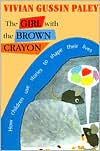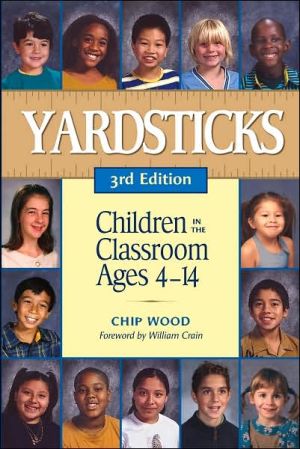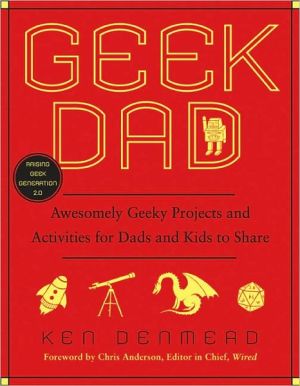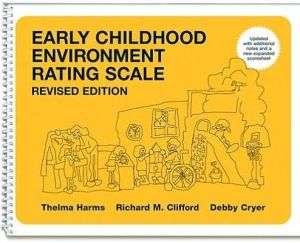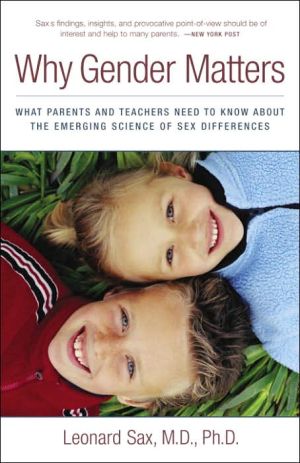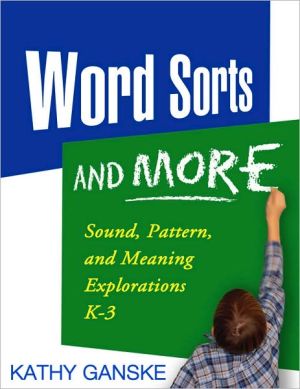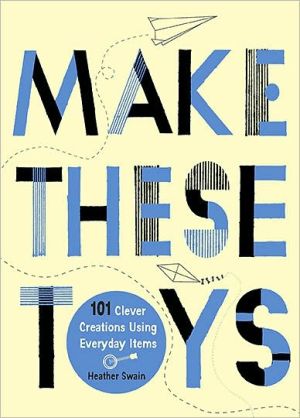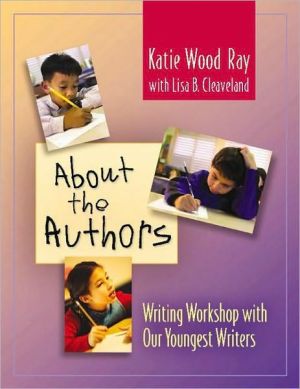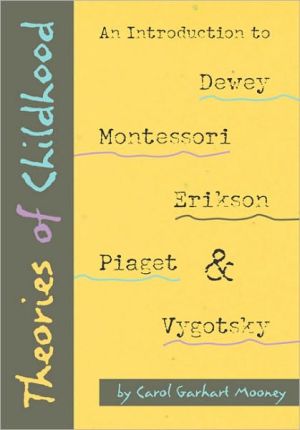The Girl with the Brown Crayon
Once again Vivian Paley takes us into the inquiring minds and the dramatic worlds of young children learning in the kindergarten classroom.\ As she enters her final year of teaching, Paley tells in this book a story of farewell and a story of self-discovery—through the thoughts and blossoming spirit of Reeny, a little girl with a fondness for the color brown and an astonishing sense of herself. "This brown girl dancing is me," Reeny announces, as her crayoned figures flit across the classroom...
Search in google:
Once again Vivian Paley takes us into the inquiring minds and the dramatic worlds of young children learning in the kindergarten classroom.As she enters her final year of teaching, Paley tells in this book a story of farewell and a story of self-discovery—through the thoughts and blossoming spirit of Reeny, a little girl with a fondness for the color brown and an astonishing sense of herself. "This brown girl dancing is me," Reeny announces, as her crayoned figures flit across the classroom walls. Soon enough we are drawn into Reeny's remarkable dance of self-revelation and celebration, and into the literary turn it takes when Reeny discovers a kindred spirit in Leo Lionni—a writer of books and a teller of tales. Led by Reeny, Paley takes us on a tour through the landscape of characters created by Lionni. These characters come to dominate a whole year of discussion and debate, as the children argue the virtues and weaknesses of Lionni's creations and his themes of self-definition and an individual's place in the community.The Girl with the Brown Crayon tells a simple personal story of a teacher and a child, interweaving the themes of race, identity, gender, and the essential human needs to create and to belong. With characteristic charm and wonder, Paley discovers how the unexplored territory unfolding before her and Reeny comes to mark the very essence of school, a common core of reference, something to ponder deeply and expand on extravagantly. Publishers Weekly Leo Lionni (see review above), is the focus of Paley's final year in her long career as a kindergarten teacher. Paley, the charismatic teacher and author of The Boy Who Would Be a Helicopter and You Can't Say You Can't Play is taken on a metaphorical journey of discovery and self-discovery by kindergartners with inquiring minds. Led by Reeny, a five-year-old black girl who is "a natural born innovator," the children and their teacher embark on a year-long study of Lionni, one of the class's favorite authors. Through characters in Lionni's books (Mr. McMouse, Frederick, among others) the children play out little dramas of gender, inclusion and sharing as the group paint posters and discuss the behaviors of their favorites. Reeny, for example, immediately identifies with Frederick: "That brown mouse seem to be just like me!... Because I'm always usually thinking 'bout colors and words the same like him." Paley's kindergarten is an oasis, blessed with a unique curriculum and a teacher willing to be taught by her students. Paley tries to fit lessons about adult biases into this paradigm as well, but they tend to be strained: e.g. one adult interprets Mr. McMouse's encounter with an unfamiliar reflection in his mirror as "what happens to colored folks who hang out with too many white people. They lose their image." But the classroom is one that any parent or teacher would wish for their own. (Mar.)
\ Boston Sunday GlobePaley's book is the breathtaking account of a golden time she has carved out in the lives of [her school] children and herself. Essentially, she conducts a high-power kindergarten think tank in which she, the children, and some parents explore 'the artist's role in society, the conditions necessary for thinking, and the influence of music and art on the emotions.' Infected by their teacher's enthusiasm, wisdom, and human warmth, these beautiful children shape their semester of art, dance, song, and applied psychology around 14 picture books by the great writer-illustrator Leo Lionni...[Paley] render[s] tellingly the originality and sensitivity with which her kindergartners explore art and life as they skip from work to work, character to character, and back to their daily lives with persistence, eloquence, and depth...Her book is a reminder for adult readers that our task, at home and abroad, is to ensure that children may flourish with such awareness of their own worth that they can be free, then, to love another.\ — Peter F. Neumeyer\ \ \ \ \ \ Reading TeacherI was delighted after an initial reading of The Girl With the Brown Crayon and couldn't wait to share it. However, after rereading the text and discussing it as a member of a learning community, I can more fully appreciate why it was awarded Harvard University Press's annual prize for an outstanding publication about education and society.\ \ \ \ Young Children[Paley describes how] she decides to give direction to her curriculum by focusing on the books of one author, Leo Lionni...The result, as recorded in the book, is a long exploration, questioning, and debate among the children and teachers about the characteristics and actions of the characters and important ideas (which become curriculum themes) as the books are read, dramatized, and portrayed in notebooks and posters. Throughout this journey, Paley shares her unique insight into the nature of young children and kindergarten learning as it could be, as it should be.\ \ \ \ \ \ Book LinksTo focus a year's curriculum on a single writer, no matter how acclaimed or popular, was a departure for [Vivian Gussin Paley] and her school. But as anyone can tell from reading The Girl with the Brown Crayon, Paley's experiment was a resounding success, cultivating among very young children a deep engagement with literature that they were able to share every day.\ — Molly McQuade\ \ \ \ \ \ San Jose Mercury NewsPaley [tells how she] and her co-teacher turn a sizable portion of their curriculum over to a study of Lionni stories, and her students blossom with insight...Paley's book is a treasure for anyone who wants to know more about what magic is possible in a classroom where a teacher encourages what Paley calls...a "narrative community."\ — Carol Doup Muller\ \ \ \ \ \ Boston Sunday GlobePaley's book is the breathtaking account of a golden time she has carved out in the lives of [her school] children and herself. Essentially, she conducts a high-power kindergarten think tank in which she, the children, and some parents explore 'the artist's role in society, the conditions necessary for thinking, and the influence of music and art on the emotions.' Infected by their teacher's enthusiasm, wisdom, and human warmth, these beautiful children shape their semester of art, dance, song, and applied psychology around 14 picture books by the great writer-illustrator Leo Lionni...[Paley] render[s] tellingly the originality and sensitivity with which her kindergartners explore art and life as they skip from work to work, character to character, and back to their daily lives with persistence, eloquence, and depth...Her book is a reminder for adult readers that our task, at home and abroad, is to ensure that children may flourish with such awareness of their own worth that they can be free, then, to love another.\ — Peter F. Neumeyer\ \ \ \ \ Reading TeacherI was delighted after an initial reading of The Girl With the Brown Crayon and couldn't wait to share it. However, after rereading the text and discussing it as a member of a learning community, I can more fully appreciate why it was awarded Harvard University Press's annual prize for an outstanding publication about education and society.\ \ \ \ \ Young Children[Paley describes how] she decides to give direction to her curriculum by focusing on the books of one author, Leo Lionni...The result, as recorded in the book, is a long exploration, questioning, and debate among the children and teachers about the characteristics and actions of the characters and important ideas (which become curriculum themes) as the books are read, dramatized, and portrayed in notebooks and posters. Throughout this journey, Paley shares her unique insight into the nature of young children and kindergarten learning as it could be, as it should be.\ \ \ \ \ Book LinksTo focus a year's curriculum on a single writer, no matter how acclaimed or popular, was a departure for [Vivian Gussin Paley] and her school. But as anyone can tell from reading The Girl with the Brown Crayon, Paley's experiment was a resounding success, cultivating among very young children a deep engagement with literature that they were able to share every day.\ — Molly McQuade\ \ \ \ \ San Jose Mercury NewsPaley [tells how she] and her co-teacher turn a sizable portion of their curriculum over to a study of Lionni stories, and her students blossom with insight...Paley's book is a treasure for anyone who wants to know more about what magic is possible in a classroom where a teacher encourages what Paley calls...a "narrative community."\ — Carol Doup Muller\ \ \ \ \ Publishers WeeklyLeo Lionni see review above, is the focus of Paley's final year in her long career as a kindergarten teacher. Paley, the charismatic teacher and author of The Boy Who Would Be a Helicopter and You Can't Say You Can't Play is taken on a metaphorical journey of discovery and self-discovery by kindergartners with inquiring minds. Led by Reeny, a five-year-old black girl who is "a natural born innovator," the children and their teacher embark on a year-long study of Lionni, one of the class's favorite authors. Through characters in Lionni's books Mr. McMouse, Frederick, among others the children play out little dramas of gender, inclusion and sharing as the group paint posters and discuss the behaviors of their favorites. Reeny, for example, immediately identifies with Frederick: "That brown mouse seem to be just like me!... Because I'm always usually thinking 'bout colors and words the same like him." Paley's kindergarten is an oasis, blessed with a unique curriculum and a teacher willing to be taught by her students. Paley tries to fit lessons about adult biases into this paradigm as well, but they tend to be strained: e.g. one adult interprets Mr. McMouse's encounter with an unfamiliar reflection in his mirror as "what happens to colored folks who hang out with too many white people. They lose their image." But the classroom is one that any parent or teacher would wish for their own. Mar.\ \
